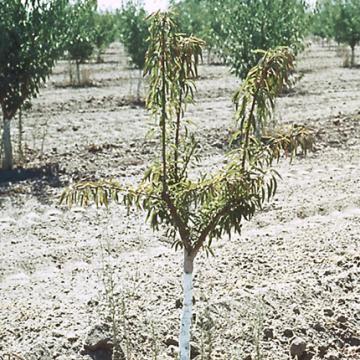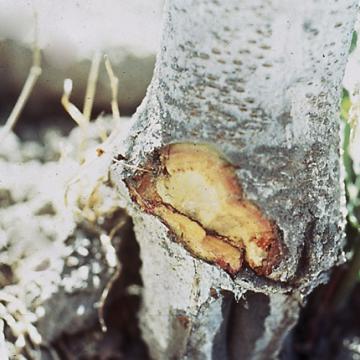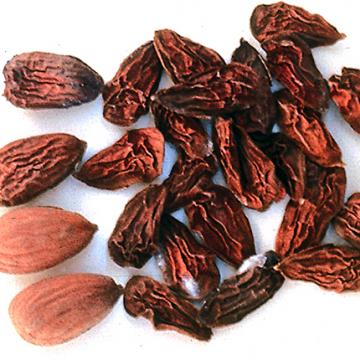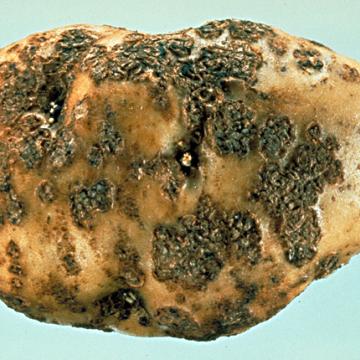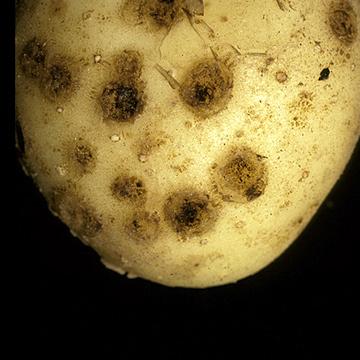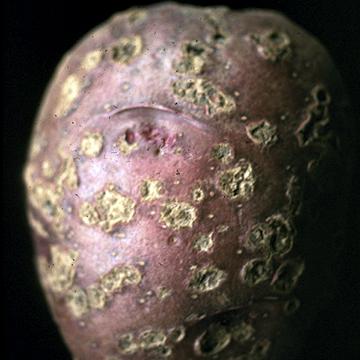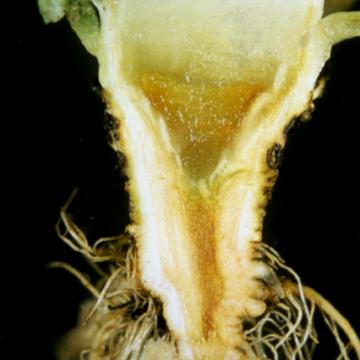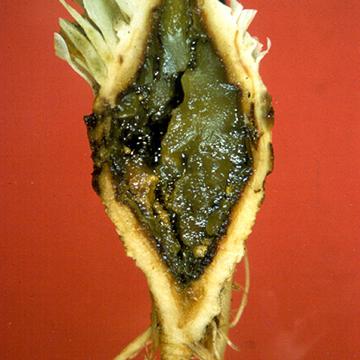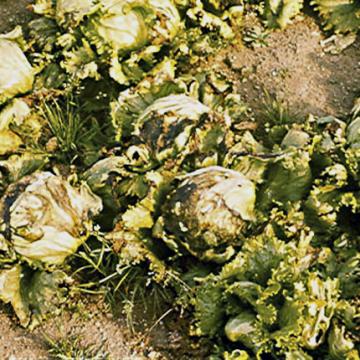DISEASE: Brown line and decline
HOST: Almond
Stunted and yellowish diseased tree. Such trees produce little to no growth and decline rapidly.
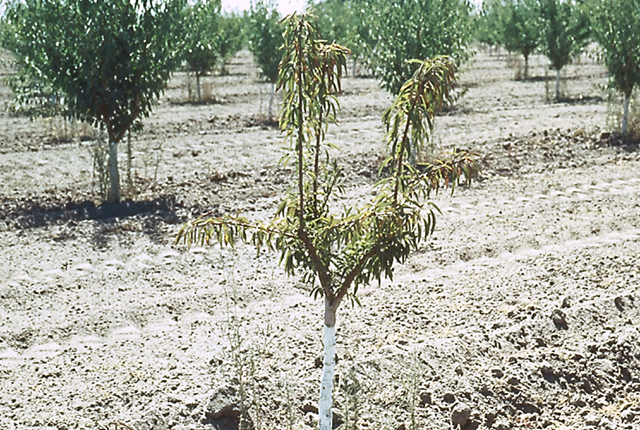
Brown line and decline | Almond
DISEASE: Brown line and decline
HOST: Almond (Prunus dulcis)
PATHOGEN: 'Candidatus Phytoplasma' sp.
PATHOGEN SYNONYM: Phytoplasma (undefined)
SOURCE: B. Teviotdale
DISEASE: Brown line and decline
HOST: Almond
Bark was split laterally at graft union, revealing line of necrotic tissue that extends into woody cortical tissues.
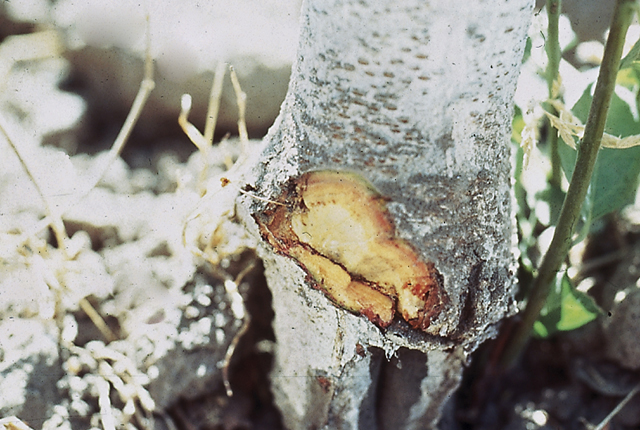
Brown line and decline | Almond
DISEASE: Brown line and decline
HOST: Almond (Prunus dulcis)
PATHOGEN: 'Candidatus Phytoplasma' sp.
PATHOGEN SYNONYM: Phytoplasma (undefined)
SOURCE: J. Uyemoto
DISEASE: Brown line and decline
HOST: Almond
Shriveled nuts from infected tree. Two healthy kernels (bottom left).
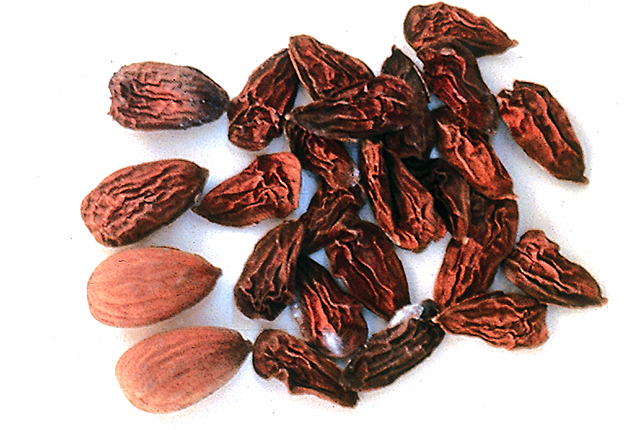
Brown line and decline | Almond
DISEASE: Brown line and decline
HOST: Almond (Prunus dulcis)
PATHOGEN: 'Candidatus Phytoplasma' sp.
PATHOGEN SYNONYM: Phytoplasma (undefined)
SOURCE: J. Uyemoto
DISEASE: Common scab (Potato scab)
HOST: Potato
Symptoms of common scab vary depending upon the cultivar. The lesions can be shallow or deep, erumpent and corky, and vary in color.
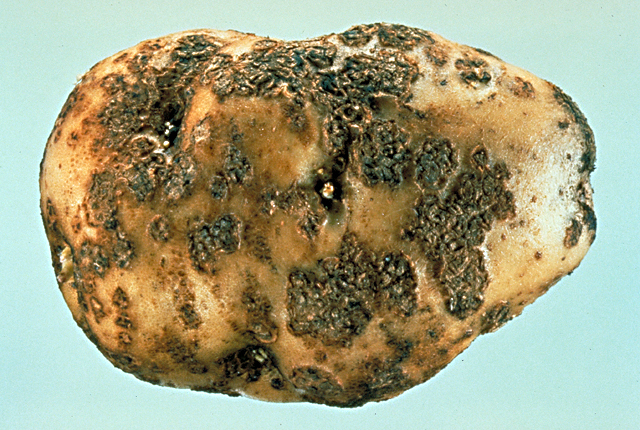
Common scab (Potato scab) | Potato
DISEASE: Common scab (Potato scab)
HOST: Potato (Solanum tuberosum)
PATHOGEN: Streptomyces scabiei
PATHOGEN SYNONYM: Streptomyces scabies
SOURCE: A. Secor
DISEASE: Common scab (Potato scab)
HOST: Potato
White-skinned tuber with sunken and superficial scab lesions.
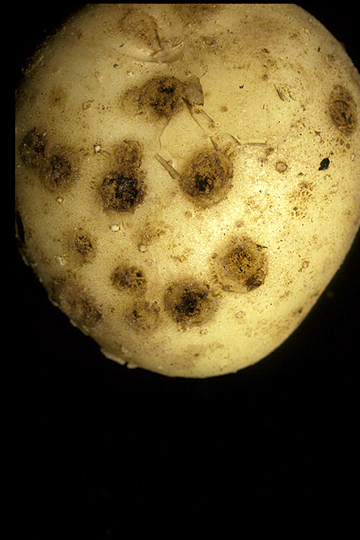
Common scab (Potato scab) | Potato
DISEASE: Common scab (Potato scab)
HOST: Potato (Solanum tuberosum)
PATHOGEN: Streptomyces scabiei
PATHOGEN SYNONYM: Streptomyces scabies
SOURCE: S. Thomson
DISEASE: Common scab (Potato scab)
HOST: Potato
Red-skinned tuber with lesions that usually penetrate less than 1 mm.
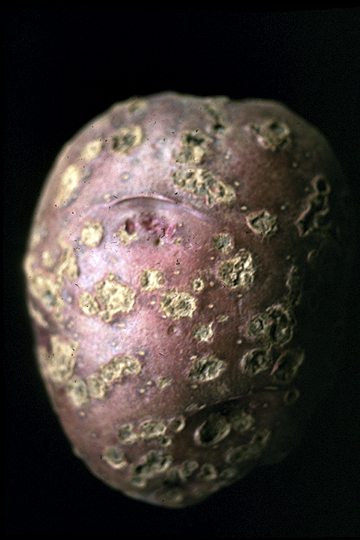
Common scab (Potato scab) | Potato
DISEASE: Common scab (Potato scab)
HOST: Potato (Solanum tuberosum)
PATHOGEN: Streptomyces scabiei
PATHOGEN SYNONYM: Streptomyces scabies
SOURCE: S. Thomson
DISEASE: Head rot (Jelly rot)
HOST: Lettuce
Sliced head of lettuce. Typical symptoms are a translucent appearance and browning or jelly rot of the stalk (crown).
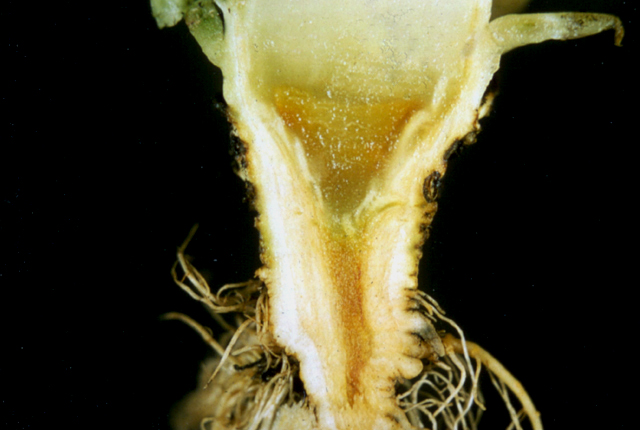
Head rot (Jelly rot) | Lettuce
DISEASE: Head rot (Jelly rot)
HOST: Lettuce (Lactuca sativa)
PATHOGEN: Pectobacterium carotovorum
PATHOGEN SYNONYM: Erwinia carotovora subsp. carotovora
SOURCE: J. Cho, A. Alvarez
DISEASE: Head rot (Jelly rot)
HOST: Lettuce
Advanced stage of lettuce stalk rot (crown).
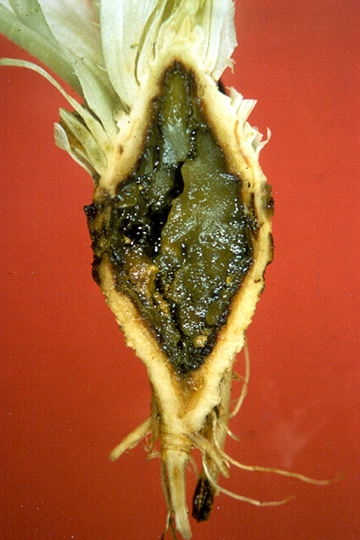
Head rot (Jelly rot) | Lettuce
DISEASE: Head rot (Jelly rot)
HOST: Lettuce (Lactuca sativa)
PATHOGEN: Pectobacterium carotovorum
PATHOGEN SYNONYM: Erwinia carotovora subsp. carotovora
SOURCE: J. Cho, A. Alvarez
DISEASE: Head rot (Jelly rot)
HOST: Lettuce
Head rot of lettuce first appears as rapid wilt of outer wrapper leaves. Wilt is caused by collapse of vascular tissues, which develop a pinkish to brown discoloration.
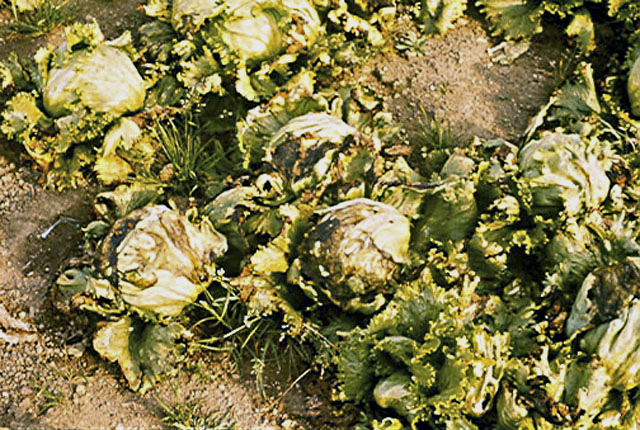
Head rot (Jelly rot) | Lettuce
DISEASE: Head rot (Jelly rot)
HOST: Lettuce (Lactuca sativa)
PATHOGEN: Pectobacterium carotovorum
PATHOGEN SYNONYM: Erwinia carotovora subsp. carotovora
SOURCE: L. Fucikovsky


